Explore Vikos Gorge: Hiking, Rafting, and Food in...
One of the most impressive canyons...
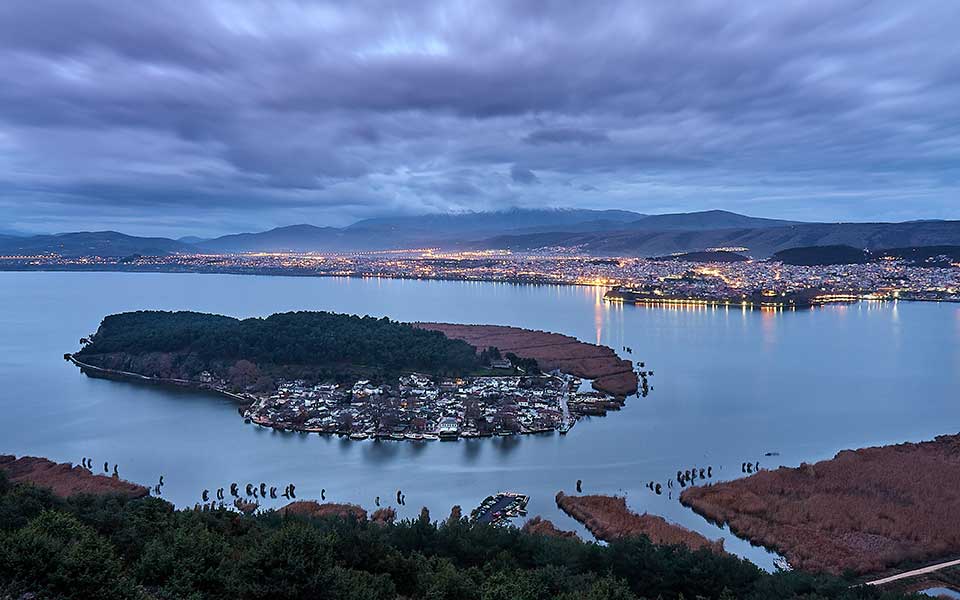
The City of Ioannina and Lake Pamvotida as seen from the foothills of mountaint range Mitsikeli.
© Giorgos Tsafos
Back in 2017, driving down the newly opened Route 5 – commonly referred to as “Ionia Odos” – for the first time, I felt myself welling up. Never again would I need to drive through the unbearable summer heat of Agrinio, or endure the traffic jams at Amfilochia, or brave the hairpin turns near Menidi.
Route 5 runs from just outside Patras in the Peloponnese over to the Greek mainland and up to the Epirus region. This modern dual carriageway, which had once seemed so improbable, had become a reality and was taking me to the town of Ioannina – my mother’s birthplace – fast and safely, without any stress.
I had spent my childhood vacations in Ioannina with my grandparents and other relatives but, as an adult, I knew little of the city. I had been used to seeing it through other people’s eyes, and incompletely: I didn’t have the curiosity and enthusiasm of the foreign visitors who are immediately captivated by the legends of Ali Pasha – the onetime Ottoman ruler of the city, by the narrow streets of the Castle district and by beauty of the lake.
In January 2020, going back to Ioannina, this time as a travel journalist, I wanted to see the city with “new eyes” – as Proust would say – even though I knew I’d have a hard time switching to a wholly new perspective, and even though most of what I’d be looking at would be old.
After all, Ioannina’s identity lies in its history and its traditions, its monuments, museums, and old neighborhoods. I settled instead for trying to find those places that hold a special significance for the modern visitor and those people who, in their own ways, are promoting and improving this city, a community which is only beginning to come out of its age-old geographical isolation.
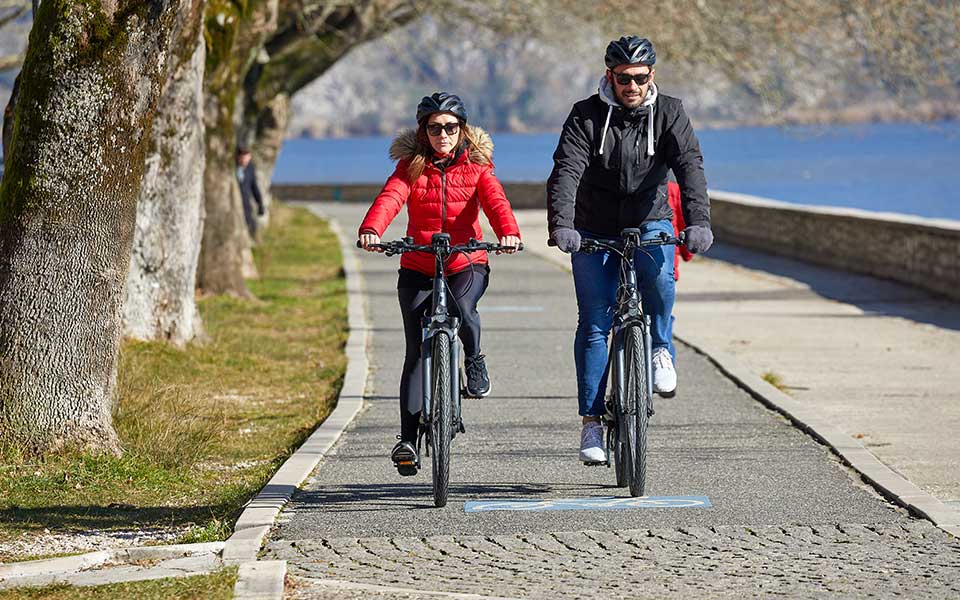
Lefteris and Hara of Bikewise Travel organize bike tours around the lake
© Giorgos Tsafos
“Deep and blue-green, the lake spreads out beside the small town.” This is how the city’s own poet Dimitris Hatzis begins his famous book of short stories “The End of Our Small Town,” highlighting the inseparable bond between the lake and the city of Ioannina.
Indeed, the city would not be the same without the charm of Lake Pamvotida. Its waters, however, have long ceased to be either blue-green or deep: the bottom of the lake is full of rubble deposited in the past during its long use as an unofficial dumping site.
Nowadays, the lake belongs to the Natura 2000 European Network of nature conservation areas. Nevertheless, it will be a while before the natural environment of the lake recovers completely. I arrived in Ioannina at the start of winter; in the lake floated detritus and broken reed stalks from recent storm winds. Still, swans and great crested grebes glided across its waters, and the Mitsikeli mountain range, red under the setting sun, was mirrored on its surface.
Lake Pamvotida possesses a unique kind of magic, which is perhaps most noticeable when you’re walking along the charming promenade along its edge. If you enjoy cycling, there is a dedicated bike path around the lake, or you can book an organized bike excursion with Lefteris and Hara of Bikewise Travel who will take you around the lake or to nearby villages. Hara will be waiting for you somewhere along the way with a picnic basket full of local delicacies.
To find out more about this fragile wetland and the challenges that face it, visit the Information Center of the Management Body of Pamvotis Lake, located on the islet in the middle of the lake, reachable by tourist boat.
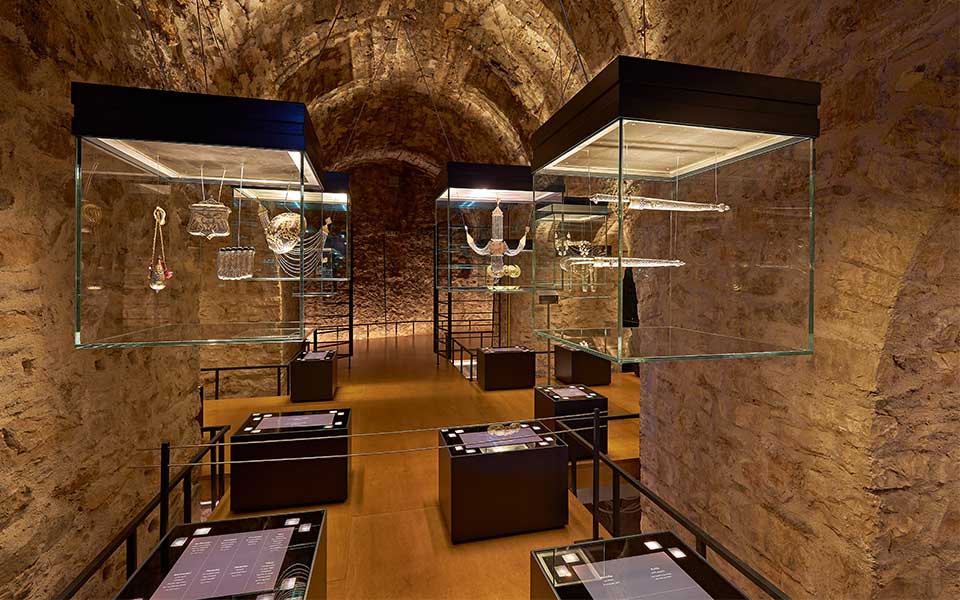
The Silversmithing Museum of the Piraeus Bank Group Cultural Foundation
© Giorgos Tsafos
The Castle district, with its small cobbled alleys, is considered picturesque by many. For my part, I’ve always have a hard time seeing the charm in houses that are either falling apart or have been renovated with no thought for aesthetics, or in narrow streets clogged with cars parked haphazardly.
However, the district’s two fortresses and their respective mosques are really impressive, especially the southeastern castle called Its Kale (meaning “Inner Castle” in Turkish), where Ali Pasha’s palace, destroyed in a fire in 1870, once stood.
The Silversmithing Museum of the Piraeus Bank Group Cultural Foundation, which constitutes one of the contemporary jewels of Ioannina, is located in Its Kale. The museum is dedicated to the art of silversmithing during the pre-industrial era and to the history of that craft in the Epirus region from the 15th century onwards. Its exhibition items are divided across two levels of the admirably renovated western bastion.
Upon entering, visitors are welcomed by the sound of a silversmith hammering away, just part of a wide range of presentation means – texts, visual aids, films and multimedia applications – that augment the experience as you discover the traditional techniques of shaping and decorating silver objects. The second level presents examples of typical Epirote crafted objects, which are showcased in display cabinets hanging from the ceiling and illuminated from below. Before you leave, pay a visit to the museum’s gift shop and its welcoming café.
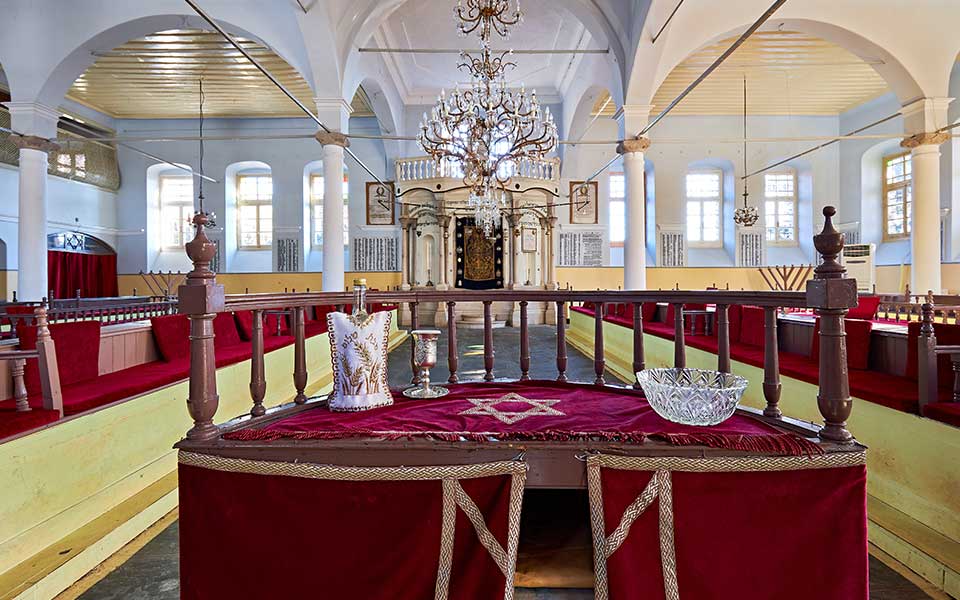
The city's Old Synagogue
© Giorgos Tsafos
Most of the Jewish inhabitants of Ioannina lived inside the Castle district, in the area immediately surrounding the city’s Old Synagogue, which is still standing but today operates primarily as a museum. It is the largest and oldest Romaniote synagogue in the Balkans and is definitely worth a visit (by appointment only – tel. (+30) 693.276.7788 or (+30) 697.749.5744).
Venturing outside the Castle district, you can wander around the ancient quarter of Kourmanio – opposite the Central Gate – once home to the wealthiest Jewish residents, and spot houses typical of this community; on beautiful Soutsou Street, you’ll find the remarkable Joseph and Esther Gani Foundation (tel. (+30) 26510.365.17) which, aside from temporary exhibitions, boasts a library rich in books on Ioannina’s history and its Jewish community.
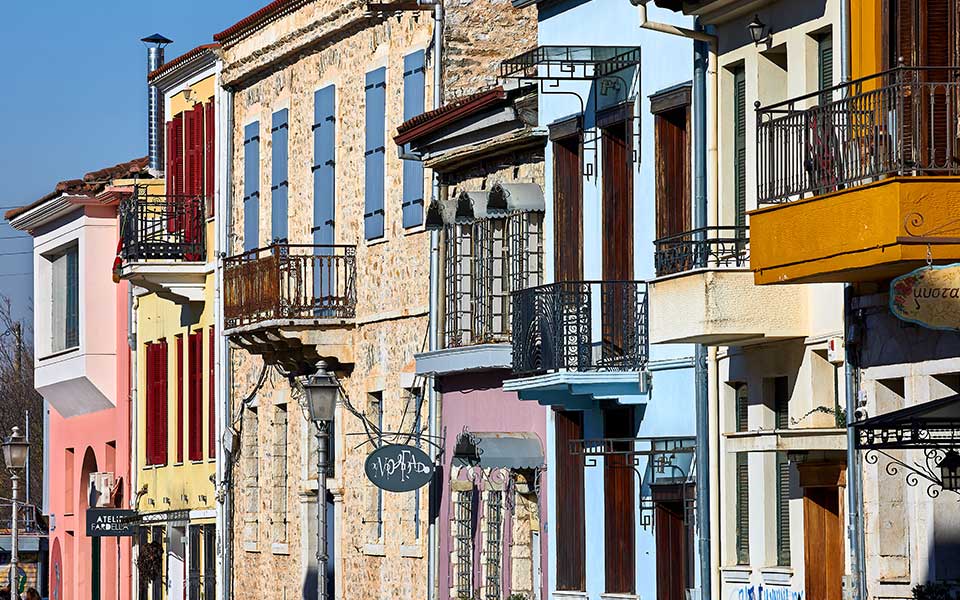
Renovated houses in the quarter of Kourmanio
© Giorgos Tsafos
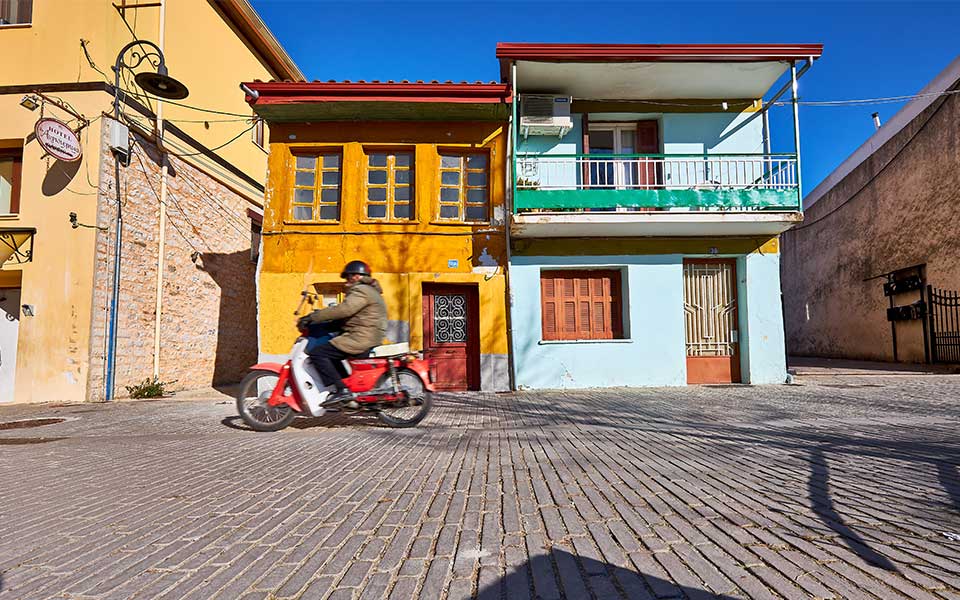
Tositsa Street in the old quarter Kourmanio
© Giorgos Tsafos
In 1869, the old market of Ioannina was burned down on orders of the city’s governor Rasim Pasha, who wanted to pave over the area. The new market, as we know it today, was built a year later; its arcades, off Anexartisias (“Independence”) Street, hosted many shops owned by Jews; the two-story buildings accommodated residences on the upper level and shops on the ground floor.
Today, after nearly a century of success, the market is suffering, abandoned by most of the locals, who prefer to shop in and around Trikoupi Street to the south. Most of the shops have closed for good so that walking around here in the early afternoon, when the few that are still in operation have shut for the mid-afternoon rest, can be melancholy.
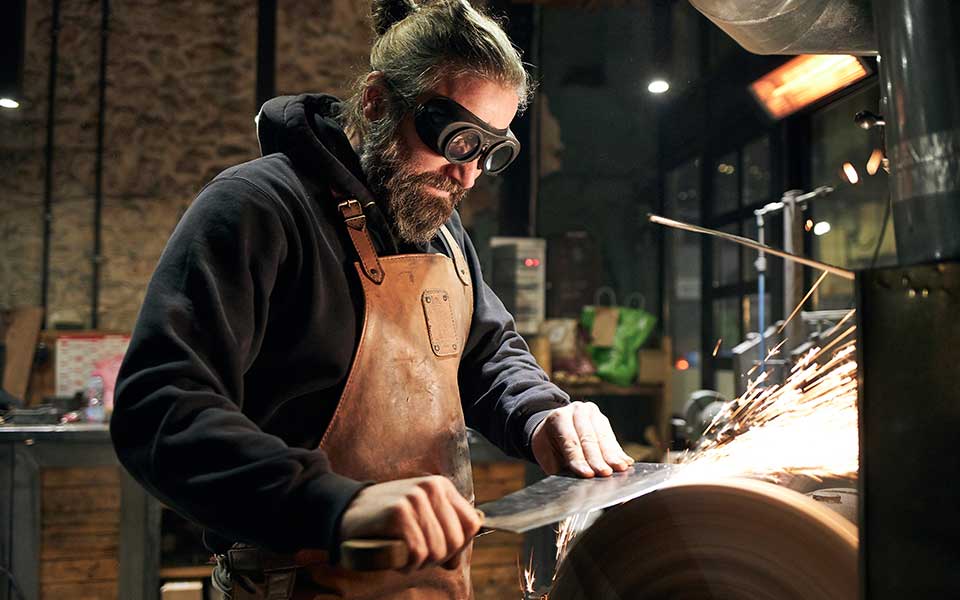
Vangelis Gogos at the workshop Telis
© Giorgos Tsafos
The area only really comes to life late in the afternoon, when locals arrive to fill the dozen cafés, bars, and meze restaurants in the narrow streets of the market area. A walk around here in the morning, however, might just be the best way to get a taste of what the city used to be like, and provide the opportunity for a chat with some of the remaining shopkeepers who are fond of this neighborhood and would love to see it thriving again.
Rania Piteni and her husband Vangelis Gogos, for instance, are carrying on the craft of knife-making, handed down by Rania’s grandfather Aristotelis. Aside from their knives – which are so perfect they could be part of a cutlery set in a 5-star hotel – the couple handmakes other cutting tools, including shears for shepherds. Their beautifully renovated shop, which bears the name Telis (1 Zappa), offers a wide range of objects that make for great gifts.
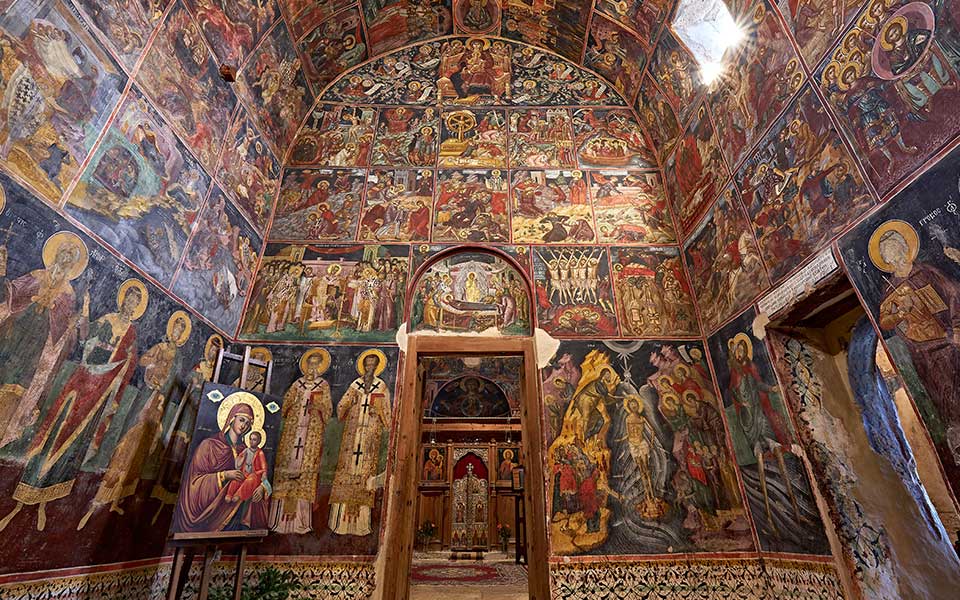
The Monastery of Aghios Nikolaos Filanthropinon
© Giorgos Tsafos
The traditional character of the islet of Ioannina, which has been inhabited for centuries, has remained unchanged over the years; it is home to the third largest monastic community in Greece – after those of Aghion Oros (Mount Athos) and Meteora – and comprises seven monasteries.
The most important one, truly worth a detour, is the Monastery of Aghios Nikolaos Filanthropinon, built in 1292 by the Byzantine family of the same name. The church’s 16th-century murals are well preserved and form the most remarkable example of post-Byzantine murals in the Epirus region. The mural depicting the Seven Wise Men of Greece, situated on the left side of the entrance, is of particular interest.
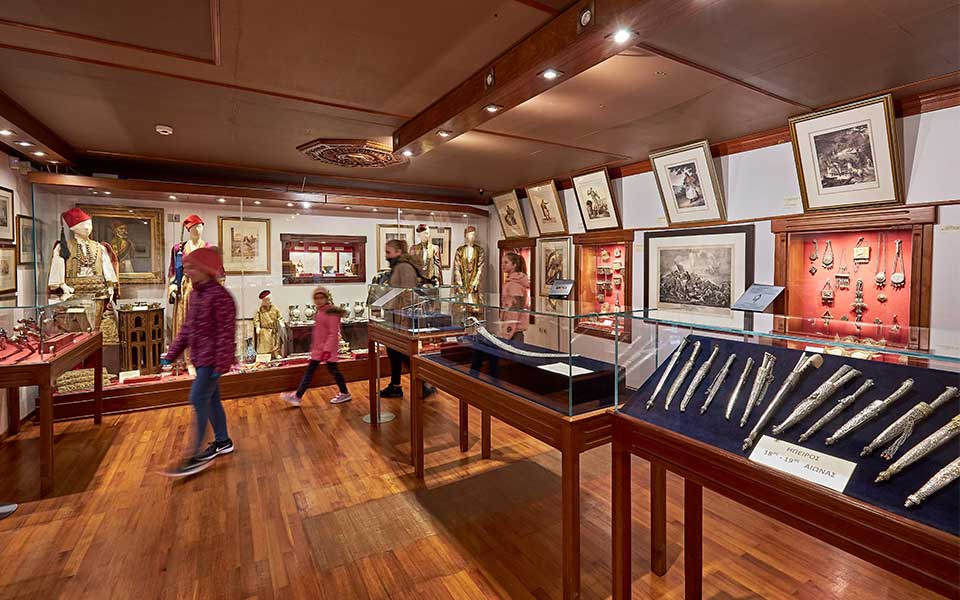
The Museum of Ali Pasha
© Giorgos Tsafos
The Monastery of Aghios Panteleimonas on the islet also deserves a visit. Ali Pasha had turned it into his personal retreat, and it was where he was murdered in an ambush carried out by soldiers of Hurshid Pasha in 1822. Today, the monastery hosts the Museum of Ali Pasha and the Revolutionary Period, which is one of the finest museums in the city of Ioannina.
It was founded in 2012 by the collector Fotis Rapakousis, who continues to look after it with great love and passion. Most of the items on display are heirlooms from the Epirus region related to Ali Pasha or to Greek actions taken against the Ottomans. Nearly forty years ago Rapakousis had set himself the life goal of collecting, preserving, and sometimes even repatriating historical objects of that period, hoping one day to display them in a museum.
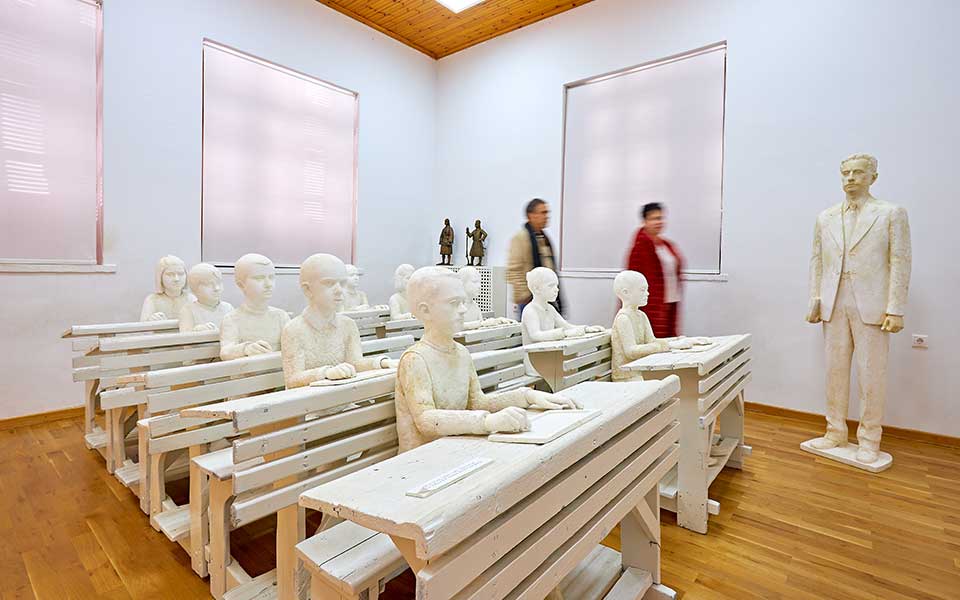
Theodoros Papagiannis Museum of Contemporary Art
© Giorgos Tsafos
The village of Elliniko lies half an hour from Ioannina in the direction of the Tzoumerka mountain range, which is also known as the Athamanika range. This village is the birthplace of sculptor Theodoros Papagiannis who, wishing to breathe new life into a place he felt was slowly dying, founded the Theodoros Papagiannis Museum of Contemporary Art, housed within the elementary school in which he was first taught to read and write. Today, the school counts a total of only six pupils.
Papagiannis donated some of his sculptures on themes related to the Epirus region and its history, including works depicting the region’s founders and expatriates, its carpenters and shepherds, its workers and intellectuals, its mothers and teachers.
One of the most moving installations is an all-white classroom with sculptures of pupils sitting at desks and a teacher, all painted white, as if in a dream. Equally moving are the artist’s totem “Ghosts” statues, which Papagiannis made with materials recovered after a fire at the National Technical University of Athens (following protests in 1994); a tribute to the university’s Epirote benefactors.
Besides having donated his works, Papagiannis organizes a sculpture symposium which takes place every summer and during which sculptors are invited to work on their creations in the open school yard, making their process available for everyone to see, and thus embedding art into people’s lives. The works created during the symposium are then displayed along the main road through the village – the “Iera Odos” (“Sacred Street”), as Papagiannis calls it – which leads to the Monastery of Tsouka.
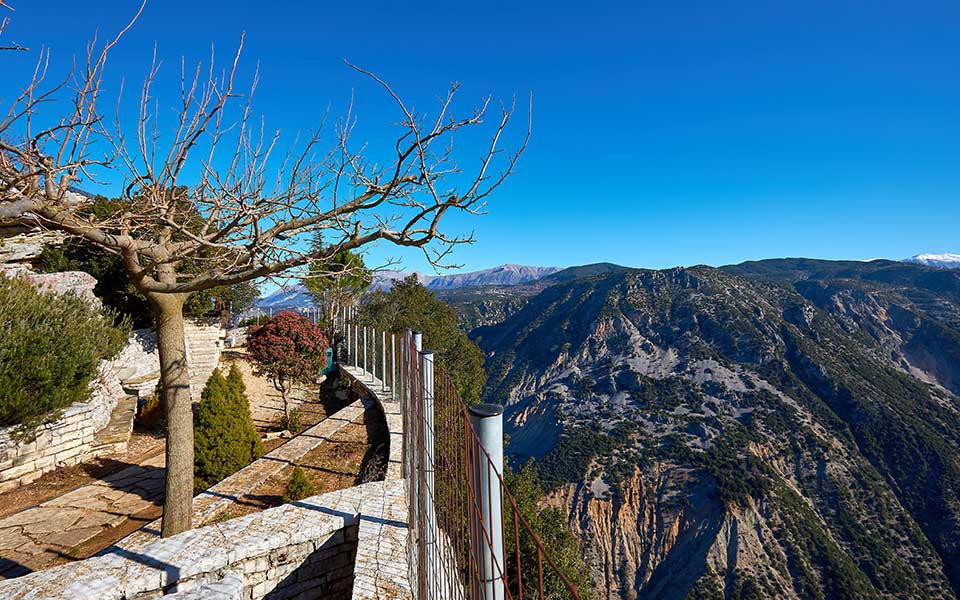
The Tzoumerka mountain range as seen from the Monastery of Tsouka
© Giorgos Tsafos
Dedicated to the birth of the Virgin Mary, the Monastery of Tsouka was, according to tradition, first erected in 1190; it acquired its current form in 1779. Its significance was recognized even by Ali Pasha himself, and it constituted such an important place of worship that it is still referred to by many as the Epirus equivalent of the famed church of Panaghia Evangelistria (Virgin Mary) of Tinos.
Today, it operates for private services, prayers and vows, the last of which the faithful traditionally seal by literally encircling the church with a “zostra”, a long rope dipped in wax. At the rear façade of the monastery, a balcony was constructed so that visitors could enjoy the wonderful view of the Tzoumerka mountains and the Arachthos River.
We would like to thank the Holy Metropolis of Ioannina for permitting us to photograph the monasteries.
ACCESS
The city of Ioannina is located approximately 400 kilometers from Athens. If you travel via Route 5, the trip will take no more than four hours. On average, the cost for tolls and gasoline runs around €180 for the round trip. From Thessaloniki, the distance is shorter – 260 kilometers via Route A2, also known as “Egnatia Odos”: the trip takes about two and a half hours and the cost for the round trip is usually around €70.
STAY
(Please note: prices listed here may change when these businesses reopen after the Covid-19 lockdown)
Lake Spirit Boutique Hotel & Spa (3A Chatzi-Pelleren, Tel. (+30) 26510.252.50, from €85 with breakfast included) is located 250m from the main square. It comprises 10 rooms with modern amenities, a bistro-restaurant, a conference room for up to 50 people, and a small gym and wellness facility that includes a sauna and jacuzzi and offers massage therapies. Free parking is included at the main square’s covered parking lot.
Hotel Antique (8 Neoptolemou, Tel. (+30) 26510.399.99, from €99 with breakfast included) is located in the city’s historic center, in a renovated 1850 neoclassical building. It comprises 12 comfortable rooms, some overlooking a beautiful courtyard.
Hotel Du Lac Congress Center & Spa (K. Papoulia & Ikkou, Tel. (+30) 26510.591.00, from €115 with breakfast included) also provides function rooms for conferences and events. Located by the lake, 1km away from the city center, the hotel has 168 rooms, a spa, a conference center, a restaurant, a bar and parking facilities.
EAT & DRINK
Select (2 Central Square) is a small shop that still looks just as it did when it opened in 1965; it offers homemade bougatsa (cream pie) prepared by Kyria Vassiliki (you can order it half-half, which is to say with both sweet cream and tangy cheese).
Kofi Microroastery (4 Stratigou Katsimirou) offers, among other menu items, specialty filter coffee from Kenya, prepared with great care on the spot.
Saligaros (70-72 Anexartisias), a café with a playful and fairytale-like atmosphere where you can enjoy a cup of coffee, hot chocolate, handmade liqueurs and sweets.
Skala (50 Ethnikis Antistaseos), a bohemian café-bar in the historic district of the same name, next to the Castle district.
Metsovitiki Folia (101 Averof) is a welcoming place that offers delicious kontosouvli (spit-roast pork) at an equally enjoyable price.
Presveia (17 K. Karamanli), a meze restaurant known for its refined and tasty creations.
Souzi Tros (13 Giosef Eligia) serves great meat dishes.
Foo Foo (at the lakeside public parking lot next to the former slaughterhouse) is a food truck that serves unique burgers and daily-made soups. Order your meal by phone at (+30) 698.056.2890 – the waiting time is usually very long.
Route 66 (49 Anexartisias, Liabei Arcade) is a bar which offers quality drinks and good music – mainly rock.
Velogiannis (133 Anexartisias) serves exquisite loukoums (Turkish delight) which are not to be missed.
The Traditional Grocery Buba Stavroula (75 Averof), a grocery store which sells Buba’s very own cheeses from the city of Metsovo – including “metsovone” and “riganato,” the latter an oregano-flavored cheese – which are sold in small packages ideal for gifts.
One of the most impressive canyons...
Whether it’s the charming town of...
Discover five mountain destinations where crisp...
Unexpected discoveries and timeless classics. Everything...